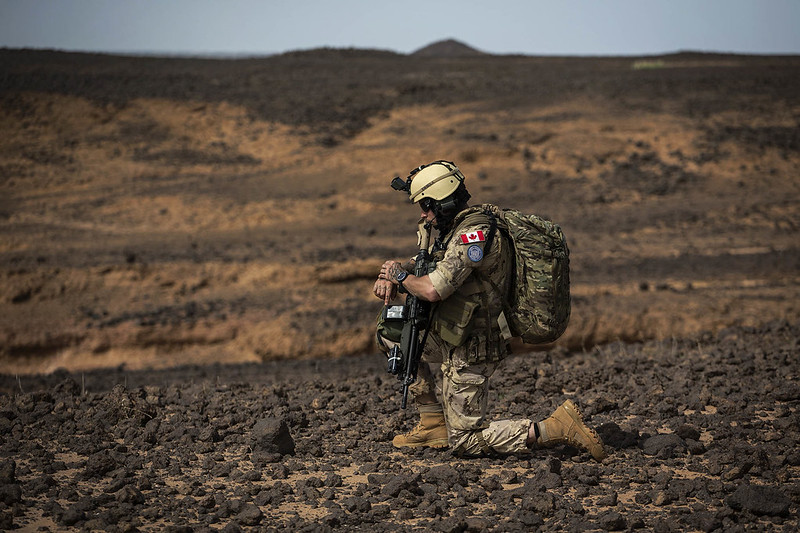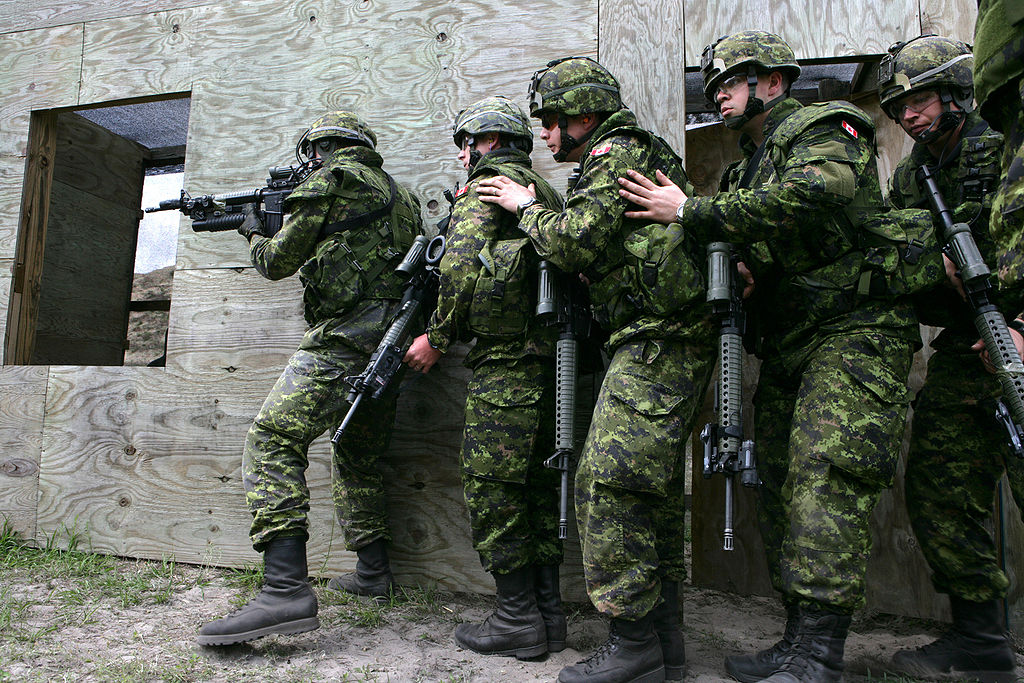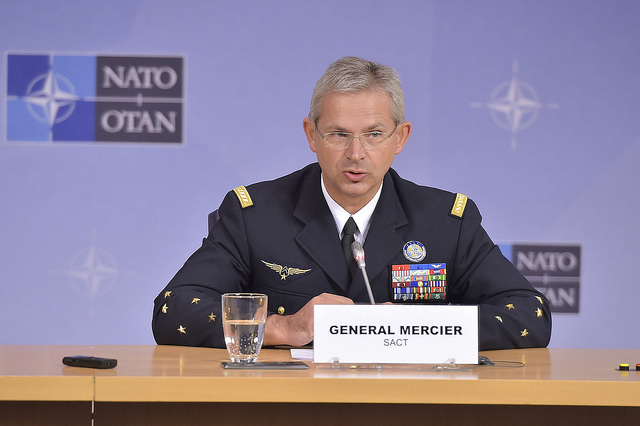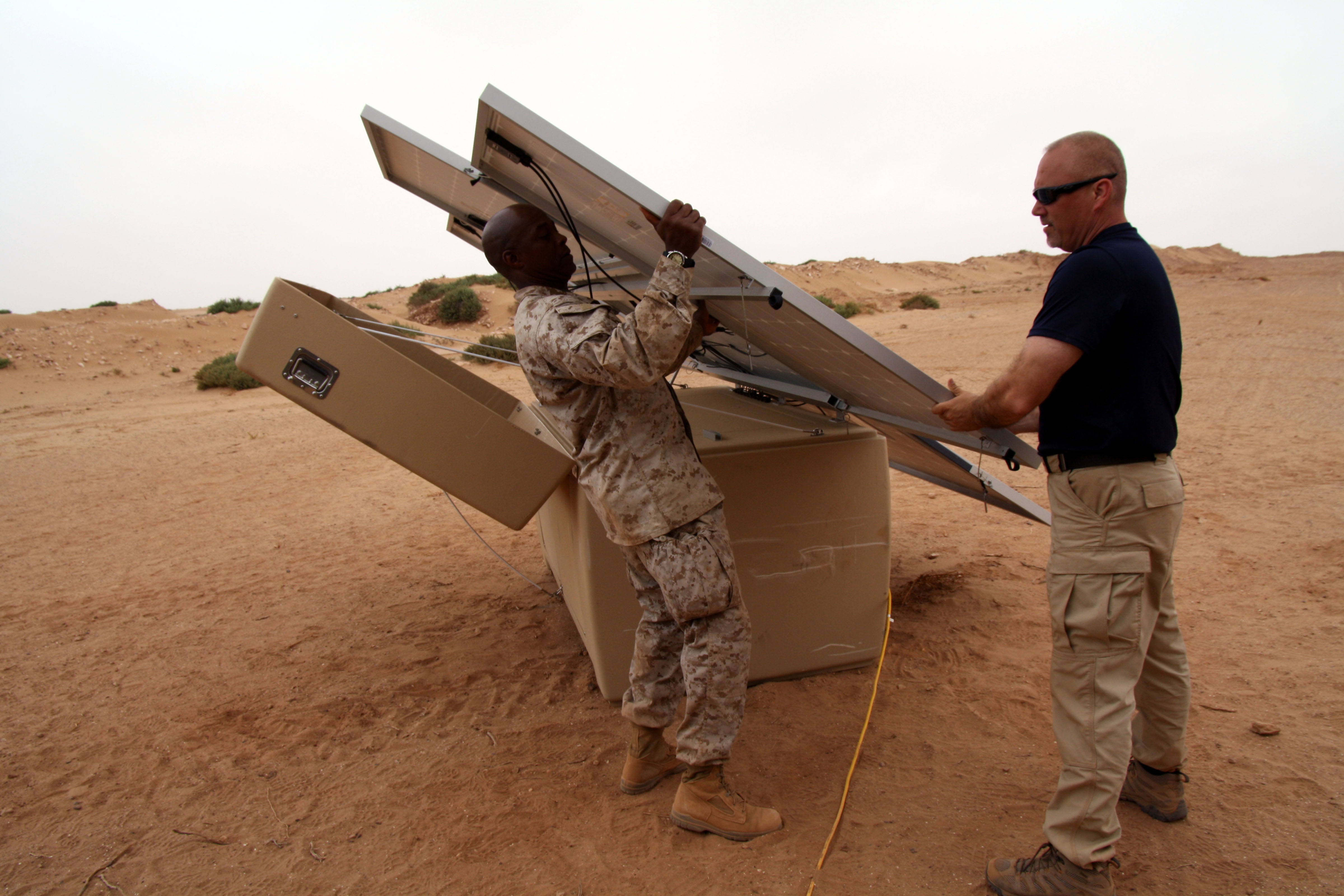Climate change has climbed to the top of the priorities for the Department of National Defence (DND). DND has begun “greening” the Canadian Armed Forces (CAF) and readying for intensifying weather-related strife, such as more natural disasters and greater competition in the thawing Arctic. The dangers of a warming globe, however, go beyond infrastructure and strategy. Rising temperatures will also affect the bodies of CAF members, especially those serving in arid zones.
The CAF has deployed—and continues to deploy—in some of the world’s hottest places. In Niger, where the CAF has supported French operations (Operation FREQUENCE) and assisted in training local forces (Operation NABERIUS), the mercury can top 40 degrees Celsius. In parts of Afghanistan, where “Canada’s longest war” unfolded, temperatures can reach nearly 50 degrees Celsius. And Iraq, which has a small CAF contingent under the aegis of Operation IMPACT, experiences spells of temperatures over 50 degrees Celsius.
Such temperatures endanger human health. As the World Health Organization reports, scorching weather strains the body. Overheating has the potential to induce heatstroke and other heat-related conditions. Fierce heat also aggravates underlying conditions. The effects can temporarily immobilize or even kill.
Military life, which can entail physically taxing work under gruelling conditions, predisposes soldiers to heat-related complications. Soldiers’ kits, including body armour, serve to hasten dehydration and raise the physical costs by adding excess weight and limiting “evaporative cooling.” According to a study involving CAF members, “high environmental temperature and humidity had a negative effect on thermoregulatory and cardiovascular responses during a loaded march.”
This study substantiated what CAF members already knew. In Afghanistan, troops often sagged under the weight of their kits—purportedly 80 or even 100 pounds—and wilted in the searing temperatures. Some even became “casualties” to the combination. Similarly, “the constant risk of dehydration,” along with welts of “blister beetles” and malaria-infected mosquitoes, compromised the CAF’s operations in Mali.
In the absence of readily available figures, the past pervasiveness of “heat stress,” which DND defines as “[a]n illness caused by a mix of excessive exposure to heat and physical exertion,” remains debatable. References to heat and “heat casualties” appear frequently in the combat recollections of CAF members who served in Afghanistan. In fact, Major William Hilton Fletcher, who commanded a task force there in 2006, commented that “we suffered more casualties due to heat exhaustion than we ever did to the enemy.” However, among the infantry soldiers surveyed at CFB Meaford in a later Defence Research and Development Canada-run focus group, the “incidence of heat-strain casualties was generally low.”
Whatever the exact prevalence, the available numbers point to a growing health concern for Canada’s defence community. From 2012 to 2015, the CAF saw “225 heat-related injuries”—a higher figure than in the past. “With the experienced increase in environmental temperatures over the last decade, heat-related injuries (HRI) have also been on the incline,” notes one source.
The incidence of heat stress will only continue to grow with time, particularly for soldiers. Although extreme heat does not discriminate between civilians and military personnel, unique occupational hazards—heavy kits and periods of intense physical activity, to name a few—as well as ongoing CAF involvement in exceptionally hot strategic regions—the Middle East and the Sahel, for example—mean that CAF members will have a greater chance of overheating while serving in places poised to suffer the worst effects of climate change. Models, for instance, suggest that the Sahel’s warming trend will tick upward perhaps as much as six degrees Celsius over the twenty-first century. This warming rate, which is “1.5 times faster than in the rest of the world,” has led some to call the Sahel “a climate hot spot.”
To avoid dehydration under such conditions, troops will have to consume ever-greater amounts of water, which introduces additional physiological challenges. “In hot, climactic extremes, daily water requirements for soldiers can range from 5 to 12 L/d,” reads one U.S. military study. A filled, one-litre canteen weighs around one kilogram, so transporting enough water for CAF members to serve safely in blazing temperatures weighs down kits and worsens “the enduring problem of soldier burden.” Indeed, Major Fletcher indicated that this caused an issue in Afghanistan, remarking: “Water made up a significant amount of the weight we carried when dismounted.”
Regardless of the amount of water consumed, blisteringly hot weather inevitably slows or even halts tasks. Given the dangerous effects of extreme heat, one DND infographic warns that those unaccustomed to it avoid even “moderate activity” at temperatures over 32 degrees Celsius. For the “acclimatized,” the infographic advises 40 minutes of “rest” attending 20 minutes of “moderate activity.” For “heavy activity,” this drops to 50 minutes of “rest” following just ten minutes of “heavy activity.” Crucially, extreme heat will also slow the pace at which soldiers can undertake tasks during these abbreviated work periods. In one study discussed in “Reducing the Burden on the Dismounted Soldier,” a recent NATO publication, “thermal strain” acted as a lag that cut into distance marched.
The defence community acknowledges the prejudicial effects of extreme heat. The CAF recognizes that heat stress hinders “operational efficiency.” Echoing this view, the Canadian Institute for Military and Veteran Health Research, which backs studies on topics relevant to the wellness of CAF members, states: “Left untreated, heat stress will cause degradation of mental and physical performance, in turn jeopardizing soldier safety and mission effectiveness.”
The weighty physiological and operational demands that high—and higher—temperatures impose on the CAF makes addressing them imperative. Doing so will require a multifaceted approach that incorporates, among other measures, more hot-weather training, lighter kits, and enhanced “physiological monitoring systems.” DND has moved to combat the problem, including giving much consideration to “wearable physiological sensors.” As of January 2021, DND reportedly had earmarked $9 million for developing smarter uniforms, which could entail embedding “printable electronics” capable of tracking how vitals respond to heat.
Nevertheless, measures like these are stopgaps. As temperatures rise, so will the physiological impact on CAF members. Even with aggressive mitigating measures in place, in the coming decades, the operational abilities of the CAF will probably suffer from the negative health effects of climate change.
Photo: A member of the CH-147 Chinook force protection team keeps watch during a medical evacuation exercise around Gao (August 9, 2018), by Mission de l’ONU au Mali – UN Mission in Mali via Flickr. Licensed under CC BY-NC-SA 2.0.
Disclaimer: Any views or opinions expressed in articles are solely those of the authors and do not necessarily represent the views of the NATO Association of Canada.




